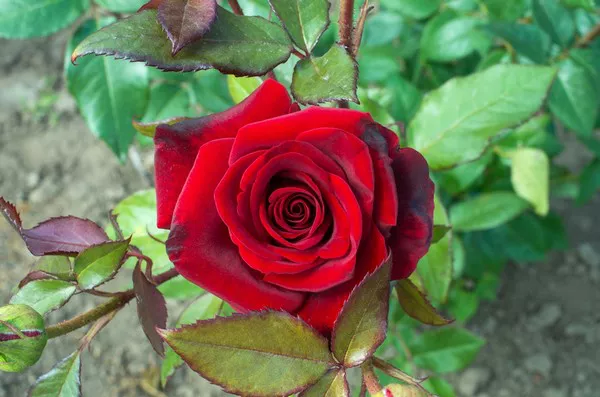Identification of the Disease
Roses, with their captivating beauty and fragrance, are beloved in gardens worldwide. However, they are susceptible to various diseases, one of the most common being rose rust. Identifying this fungal disease is crucial for effective management.
One of the hallmark signs of rose rust is the appearance of orange or rust-colored spots on the leaves and canes of the plant. These spots typically start as small, raised pustules on the underside of the leaves, eventually spreading to cover the entire leaf surface. As the disease progresses, the spots may coalesce, leading to extensive discoloration and distortion of the foliage. In severe cases, the leaves may turn yellow and prematurely drop from the plant, further weakening its health.
Apart from visual symptoms, rose rust may also manifest as reduced vigor and stunted growth in affected plants. Additionally, the presence of powdery spores on the undersides of leaves is a telltale sign of an active rust infection.
Cause of the Disease
Rose rust is primarily caused by the Phragmidium fungus, specifically Phragmidium mucronatum and Phragmidium tuberculatum. These fungal pathogens thrive in warm, humid conditions, making roses particularly susceptible during periods of high humidity and inadequate airflow.
The fungus overwinters as spores on infected plant debris, such as fallen leaves and stems, ready to infect new growth in the spring. Once conditions become favorable, usually when temperatures range between 60°F to 80°F (15°C to 27°C), the spores germinate and infect susceptible rose plants through contact with their foliage.
Moisture plays a pivotal role in the development and spread of rose rust. Rainfall, overhead watering, or even dew can create a conducive environment for fungal growth and spore dissemination. Furthermore, overcrowded planting, poor air circulation, and dense foliage provide ideal conditions for the disease to flourish.
Treatment Options
Effectively managing rose rust requires a multi-pronged approach that combines cultural practices with chemical treatments. While complete eradication of the fungus may not be feasible, diligent management can help mitigate its impact on rose plants.
1. Fungicides: Numerous fungicides are available for controlling rose rust, including both synthetic and organic options. Products containing active ingredients such as chlorothalonil, myclobutanil, or sulfur are effective against the fungus when applied according to label instructions. It’s essential to begin fungicidal treatments at the first sign of infection and continue on a regular schedule throughout the growing season, especially during periods of favorable weather for fungal development.
2. Cultural Practices: Cultural practices play a crucial role in preventing and managing rose rust. Pruning out infected plant parts, such as diseased leaves and canes, can help reduce the pathogen’s spread within the garden. Additionally, promoting good airflow around rose plants by spacing them adequately and avoiding overcrowding can inhibit fungal growth. Regularly removing fallen leaves and debris from the garden helps disrupt the fungal lifecycle by eliminating overwintering sites for spores.
3. Sanitation: Practicing good garden hygiene is essential for preventing the recurrence of rose rust. Tools used for pruning or handling infected plants should be disinfected between uses to prevent the inadvertent spread of fungal spores. Similarly, containers and pots should be cleaned thoroughly before reuse to eliminate any potential sources of contamination.
Prevention Tips
While managing rose rust after infection is essential, preventing its occurrence altogether is even more desirable. Adopting proactive measures can help safeguard rose plants against this troublesome disease.
1. Choose Resistant Cultivars: When selecting rose varieties for your garden, opt for cultivars known for their resistance to rust and other fungal diseases. Many modern rose hybrids have been bred for improved disease resistance, making them less susceptible to infection.
2. Site Selection: Choose planting sites that receive adequate sunlight and have well-drained soil. Avoid planting roses in low-lying areas prone to waterlogging, as excess moisture can exacerbate rust problems.
3. Proper Irrigation: Water roses at the base of the plant to minimize leaf wetness, as wet foliage provides an ideal environment for fungal growth. Avoid overhead watering, especially in the evening, to reduce humidity levels around the plants.
4. Mulching: Apply a layer of organic mulch around rose plants to help regulate soil moisture and temperature. Mulching also helps suppress weed growth, which can compete with roses for nutrients and water.
5. Regular Monitoring: Routinely inspect rose plants for signs of rust or other diseases, especially during periods of peak susceptibility. Early detection allows for prompt intervention, minimizing the spread of the disease.
6. Regular Monitoring: Routinely inspect rose plants for signs of rust or other diseases, especially during periods of peak susceptibility. Early detection allows for prompt intervention, minimizing the spread of the disease.
Impact on Plants
The consequences of rose rust extend beyond mere aesthetic concerns, potentially impacting the overall health and vigor of affected plants.
1. Defoliation: Severe rust infections can lead to extensive defoliation, where affected leaves prematurely drop from the plant. This not only diminishes the plant’s ornamental value but also compromises its ability to photosynthesize and produce energy.
2. Reduced Flowering: Infected rose plants may exhibit reduced flowering or produce distorted blooms, further detracting from their visual appeal.
3. Weakened Health: Continual defoliation and reduced vigor can weaken the overall health of rose plants, making them more susceptible to other stressors such as pests and diseases. In extreme cases, untreated rust infections can lead to the eventual death of the plant.
Conclusion
In conclusion, rose rust poses a significant threat to the health and beauty of rose plants, but with proper identification, proactive management, and preventative measures, its impact can be mitigated. By adopting a holistic approach that combines cultural practices, chemical treatments, and vigilant monitoring, gardeners can enjoy healthy, vibrant roses devoid of the scourge of rust.


